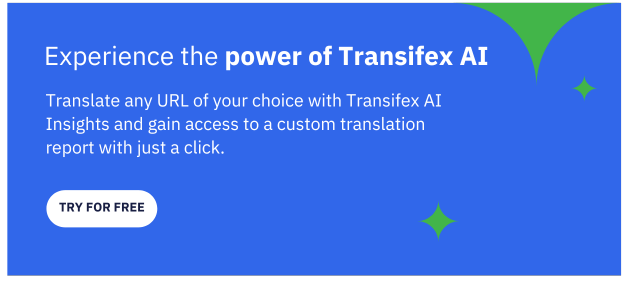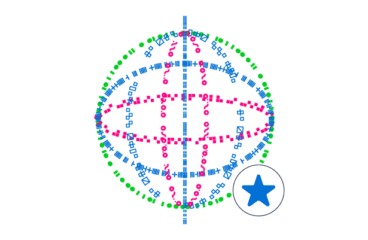Are you looking to reach a wide international audience and appeal to users who speak different languages? If so, transcreation is the key to success!
If you want to learn what transcreation is exactly, how it differs from translation, and, most importantly, how you can use it to expand your audience, you’ve come to the right place.
What is Transcreation?
Transcreation is the process of adapting content, such as text, images, or videos, from one language to another while maintaining its original tone, style, and cultural references. It’s a more creative and nuanced approach to translation, as it requires a deep understanding of the target audience, their culture, and language.
Transcreation involves rephrasing, rewriting, or reinterpreting the original content to ensure that it resonates with the target audience and conveys the same message, emotions, and intent as the original. This process is particularly valuable for marketing materials, advertising campaigns, and brand communications, where a simple word-for-word translation may not effectively capture the intended messaging across different languages and cultures.
In essence, transcreated content is a new, intent-focused piece of content meticulously tailored to the target audience’s cultural context.
How Transcreation Differs From Translation
While translation focuses on replacing words with their direct equivalents in another language, transcreation takes a more creative approach. It adapts the message to resonate with a new audience, considering cultural nuances and aiming to evoke the same emotions and intent as the original.
| Translation | Transcreation | |
|---|---|---|
| Focus | Word-for-word transfer of meaning | Adapting message for cultural and emotional impact |
| Process | Identifying direct word equivalents | Reimagining content for a new audience |
| Requirements | Source text | Source text, creative brief, brand guides, cultural understanding, etc. |
| Cost | Cheaper (billed by word) | More costly (billed by hour) |
Should You Choose Translation or Transcreation?
The choice between translation and transcreation depends on your specific goals. If your priority is simply conveying information accurately across languages, translation may be sufficient. However, if you want to evoke emotions, inspire action, and connect with audiences on a deeper level, transcreation is the most effective approach.
What are The Benefits of Transcreation?
If you want to create a multilingual website and adjust your content to your target audience’s cultural and linguistic nuances, transcreation is one of the best ways to achieve this.
But what are the benefits of transcreation for your business?
#1 It shows cultural sensitivity and awareness
Each word can carry a unique significance in every language. Even a minor misinterpretation or translation mistake can lead to misunderstandings, offense, or cultural sensitivities.
That’s why it’s essential to adapt your content to ensure your message is conveyed accurately and effectively.
Additionally, skillfully adapting content can create a positive perception of your brand among your audience, helping your brand gain their trust!
#2 It creates a sense of familiarity
In transcreation, the jokes and idioms of the source language aren’t translated literally into the target language. Instead, they are adjusted to the target language so that users can understand and resonate with them.
This creates a sense of familiarity that makes your brand more relatable to the target culture, which can encourage engagement, increasing the chance of conversions.
#3 It can boost brand awareness
To promote your products or services in a new region, you need to create content that resonates with your target audience and localize your original message.
Transcreation can help you establish your brand image in a new culture, promoting your products or services in a culturally relevant way. It can also help you maintain an accurate brand image, enhance your brand reputation, and raise brand awareness in global markets.
How to Implement Transcreation – Best Practices
To guarantee the success of a transcreation project, simply follow the steps below:
#1 Define your objectives
The first step toward successful transcreation is to define your objectives.
Are you looking to increase brand awareness, evoke specific emotions, or simply convey the original message accurately?
A clear vision will guide your entire process.
#2 Conduct market research to find your target audience
Conducting thorough market research is the best way to identify your target audience and understand their demographic characteristics, interests, and preferences.
Then, you can use the collected data to build your localization strategy and create transcreated content that culturally resonates with your intended audience.
This step is vital for accurately tailoring your message for a new foreign market in their language!
#3 Prepare a creative brief
As mentioned earlier, transcreation requires a creative brief that provides insights to the professionals working on the project.
What’s the concept behind the creative copy? What emotions and reactions do you want to provoke? What does your business offer? What makes you different from competitors? What tone of voice do you want to use? Make sure also to provide your brand glossaries and style guides.
The more information they have, the easier it is to capture your brand’s essence.
#4 Calculate your budget
Transcreation is typically more costly as it requires investing in both creativity and linguistic expertise. Try to determine your budget upfront to avoid compromising quality or timelines due to resource constraints.
Consider AI-powered tools that can automate transcreation and quality assessment processes, allowing you to make the most of your translation budget. This approach can significantly reduce costs while maintaining high translation standards, ultimately helping you allocate resources more efficiently and achieve a better ROI on your transcreation projects.
#4 Enhance workflow
Effective workflow management is key to seamless collaboration and agility in the creative process.
Using tools that facilitate collaboration between different teams, enhance task delegation and management, offer control at every stage of the process, and easily integrate with CMS platforms can help streamline your transcreation project.
Examples of Transcreation
Many companies worldwide have mastered the art of transcreation, successfully adapting their original content to match the needs of different target markets. Here are some of them!
#1 Coca Cola
Coca-Cola is a great example of transcreation success! The soft drinks company has spent years transcreating its content and marketing campaigns for local markets. Its website is localized for numerous languages, while it celebrates local holidays, like Christmas and Ramadan, with localized campaigns and charities!
#2 Red Bull
Famous for its iconic energy drinks, Red Bull has expanded its global brand by leveraging localization. Red Bull’s website’s content is transcreated into many languages, including German, French, Portuguese, Spanish, and more, while its marketing campaigns are localized for every target market.
Moreover, Red Bull has localized its can’s color, design, and drink formula and transcreated the brand’s message for China to make it relevant to the local culture. These major localization-infused changes have facilitated the brand’s entry into the Chinese market and have established it as an example of successful transcreation!
#3 Domino’s Pizza
Domino’s Pizza, one of the most popular pizza companies in the USA, has successfully localized its website and marketing campaigns for foreign markets. It has also made several adjustments to its menu to match the preferences of the target audiences, ensuring cultural resonance!
For example, it has added seafood and fish options to the Chinese menu and pizzas with curry and chicken tikka masala to the Indian menu, considering local preferences. Cultural-based adjustments like this established Domino’s Pizza as a top pizza restaurant in many countries!
How to Transcreate with AI!
Unlock Global Potential with Transifex AI
Transifex is an award-winning, all-in-one localization hub designed to maximize your content’s reach in any market with just a few clicks. With Transifex AI, you can create human-quality transcreated content that aligns with your brand’s unique voice, glossaries, and style guides.
- Sign Up for a Free Trial: Experience the transformative power of Transifex AI and see immediate results.
- Boost Engagement: Connect with your audience globally through tailored, impactful content.
- Maximize ROI: Leverage AI to reduce costs and improve efficiency while maintaining high-quality standards.
Engage the world like never before. Start your journey with Transifex AI today!
FAQs
What is the meaning of transcreation?
Transcreation is a mix of translation and creation. It refers to recreating content according to the target language’s cultural nuances and the target audience’s preferences.
Why is transcreation important?
Transcreation is a powerful tool that helps you engage with foreign audiences in a culturally relevant way, preserving your original brand message and tone. This can help you engage with your target audience in their native language, boosting brand awareness and increasing sales.
What’s the difference between transcreation and localization?
Transcreation is the process of recreating the source content for a new language and adjusting it to engage emotionally with a foreign target audience while maintaining the intended message. Localization is adapting a product or website content to match a target market’s preferences.










